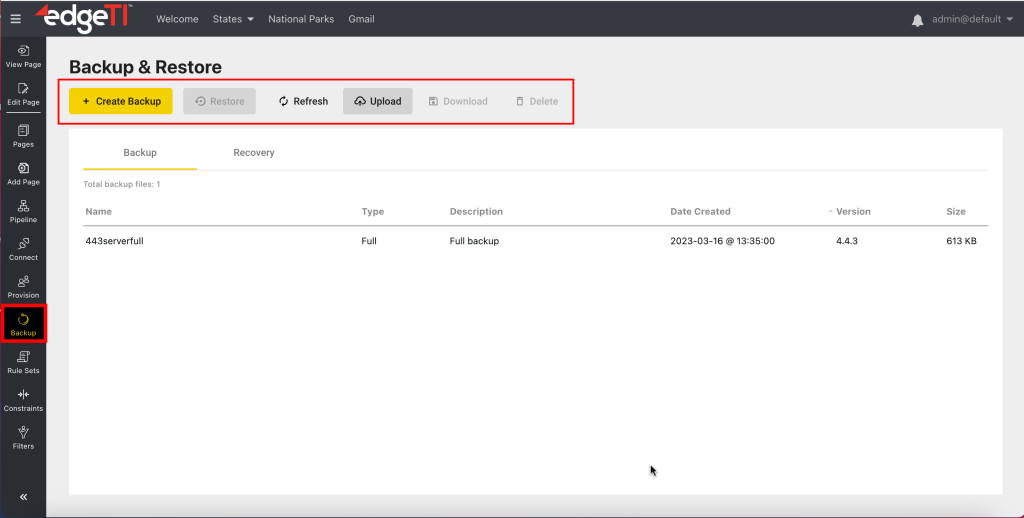Backups are used in a number of different scenarios:
- They provide a mechanism to migrate configuration from one environment to another. For example, migration from development to staging, to production.
- They are used when upgrading Edge to a newer version.
- They can provide a stable instance that can be restored in the event that the system gets in a bad state.
- They provide a way for Edge Support to investigate and troubleshoot support issues. The Edge Support Team may request a backup archive when isolating a problem.
There are three different concepts exposed in the user interface when backing up a system:
- Full Backup
A full backup saves all configuration and assets for a system at a specific point in time. Restoring a full backup will return the system to the state it was in when the full backup was created. - Partial Backup
A partial backup saves only the relevant configuration for a selected page. This allows pieces of a system (content) to be shared between different servers. - Recovery Backup
A Recovery Backup is a full backup that is automatically created prior to performing any restore operation or installation of a module. It is good practice to periodically create a full backup to prevent the loss of work. Recovery backups are automatically created to ensure changes to a system are not unintentionally lost due to restore operations.
Backup & Restore UI
The Backup & Restore interface separates out manually created full and partial backups from recovery backups that are automatically created (Backup and Recovery tabs in the screenshot below).
- Backup tab shows all manually created full and partial backups.
- Recovery tab shows all automatically created backups. Recovery backups are full backups created prior to restore operation.

The list of backups appears in a table with the following information (as seen above):
- Name
The name that was given to this backup. Some backup names are automatically generated, which includes the date and time the backup was created to make it unique. This name is also used for the name of the backup file edgeCore creates on the file system, so it must only contain characters valid for a filename. - Type
The type of backup file for this backup (either full or partial).
– Full: All configuration and assets for a system at a specific point in time. On the server file system, full backups are named with a .zip extension;
– Partial: Only relevant configuration required for selected pages. On the server file system, partial backups are named with a .esb extension; - Description
This column contains additional descriptive information. It is particularly useful when working with recovery backups because the system will provide information about why the recovery file was created. - Date Created
The date and time a backup was created. - Version
The version of edgeCore used to create the backup archive. - Size
The size of the archive. Both Backups and Recovery tabs can be sorted by size. Moreover, when the Recovery directory becomes larger than 5GB, a message will be displayed to notify the admin.
Backup & Restore Actions
Here you can perform the following actions:
- Create backups
- Restore archives
- Refresh/reload the list
- Upload archives
- Download archives
- Delete backups
Related: